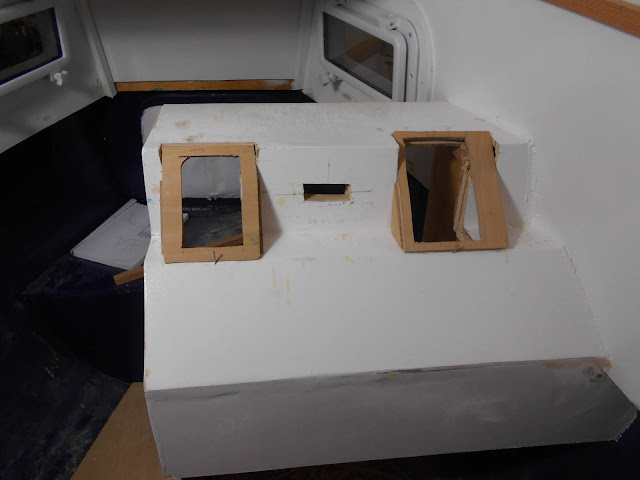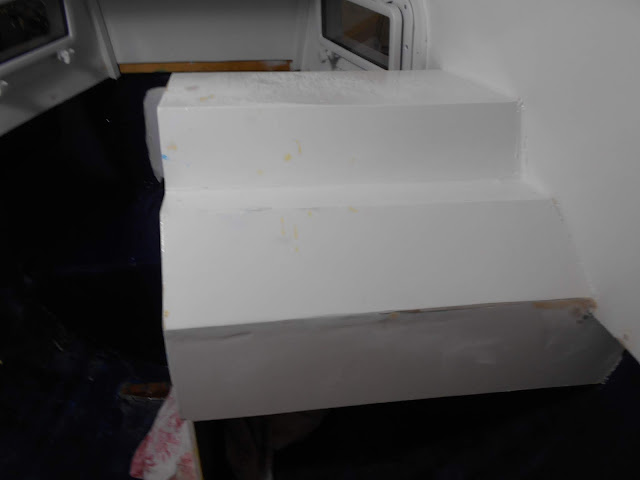I bought some really good 'goo' to seal the boat windows in the wheelhouse. I'm upstairs and the 'goo' is down, so I'll try to remember to write the details in here tomorrow.
It's really sticky stuff and I got plastered as usual - I really don't do sticky very well. It sets like rubber though and so I will neaten it up when it's fully cured.
The paintwork will need an extra coat to hide the battle-field collateral damage. I use a wire wool soap pad to clean my hands afterwards ... although I still managed to get through 10+ pairs of surgical gloves.
I've put stainless-steel spring hooks around the boat to clip fenders on.
Finally, I've started to build a locker at the base of the control console.
Not a very informative photo as you can't see the pieces under the white panel. Enough to say that is a locker that will go under the console.
That's all for now.


























